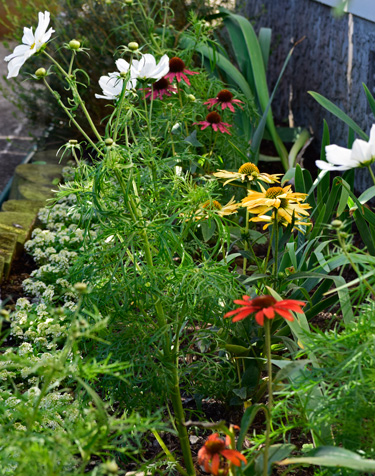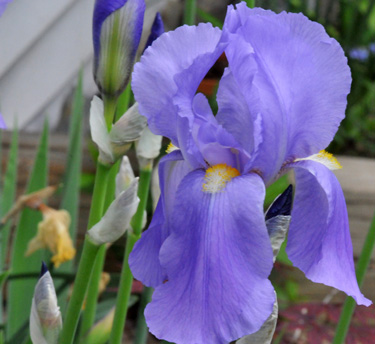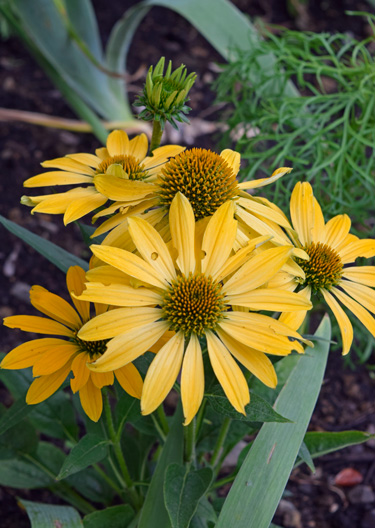Autumn makeover
Autumn is a great time for doing a garden makeover. The soil is still warm after the summer sun but also moist from the morning dew and more regular rain. The lingering sun and mild temperatures provide perfect growing conditions for encouraging roots to get established before the cooler months creep in.
I had a project to install some steps to improve the access from the front garden to the back. This provided the opportunity to overhaul an adjacent garden bed that hasn’t thrived – poor soil, lack of water (sitting under the eaves of the house) and baking hot in summer. I also needed a spot for some bearded iris rhizomes I’d been collecting and this raised garden seems the perfect spot.
So I dug out the flax, hebe and a Metrosideros Tahiti that had died of old age (that took a while, there were a lot of roots to remove that required the loppers!). Then I put the sprinkler on the soil for a couple of hours. The following day I dug it over and added compost. A visit to the garden centre was on the cards and I came away with punnets of creamy alyssum, white cosmos and three brilliant Echinacea (Coneflowers). Less than two hours later, the garden was planted.
Bearded irises are one of the joys of the Spring garden because of their flamboyant flowers, and I just love the smell. Each flower may only last a few days but the stems will produce multiple buds. Bearded irises grow from rhizomes which form into clumps. These can be divided to provide new plants. Use only rhizomes that are undamaged and have a healthy fan of leaves attached. The best time to plant them is early summer or no later than March to give them time to establish new roots before winter. They like a well drained site with at least half a day of sun. Prepare the soil with compost and a little lime. Plant the rhizomes - with their leaves cut back to an upside down "V" - so that the top of the rhizome is level with the surface of the soil and it is exposed to the sun. This helps to initiate next season's flowering. Firm the roots in well to anchor the plant.
Echinacea enjoy conditions similar to the irises, requiring good drainage and plenty of sun, but they can be very short lived if conditions aren’t to their liking. They dislike lots of moisture so after planting the three I purchased, they each got a good soak to settle them in and now they’ll rely on only the rain that falls (or doesn’t as the case may be). The raised bed they are planted in will hopefully enhance the drainage so they survive the winter.
The plants I purchased were a range called Cheyenne Spirit, winner of the 2013 All America Selections flower award. They feature beautiful single flowers in bright shades of purple, red, yellow and orange, and are loved by bees and butterflies. They must also be loved by something a little less desirable because only a few days after planting, the petals had been nibbled at around the edges. C'est la vie! My fervent wish is that this new garden bed is to their liking and they will thrive and delight me with a spectacular display of flowers next summer.
23-Mar-2015

The finished garden

Bearded iris

Coneflower 'Cheyenne Spirit'

